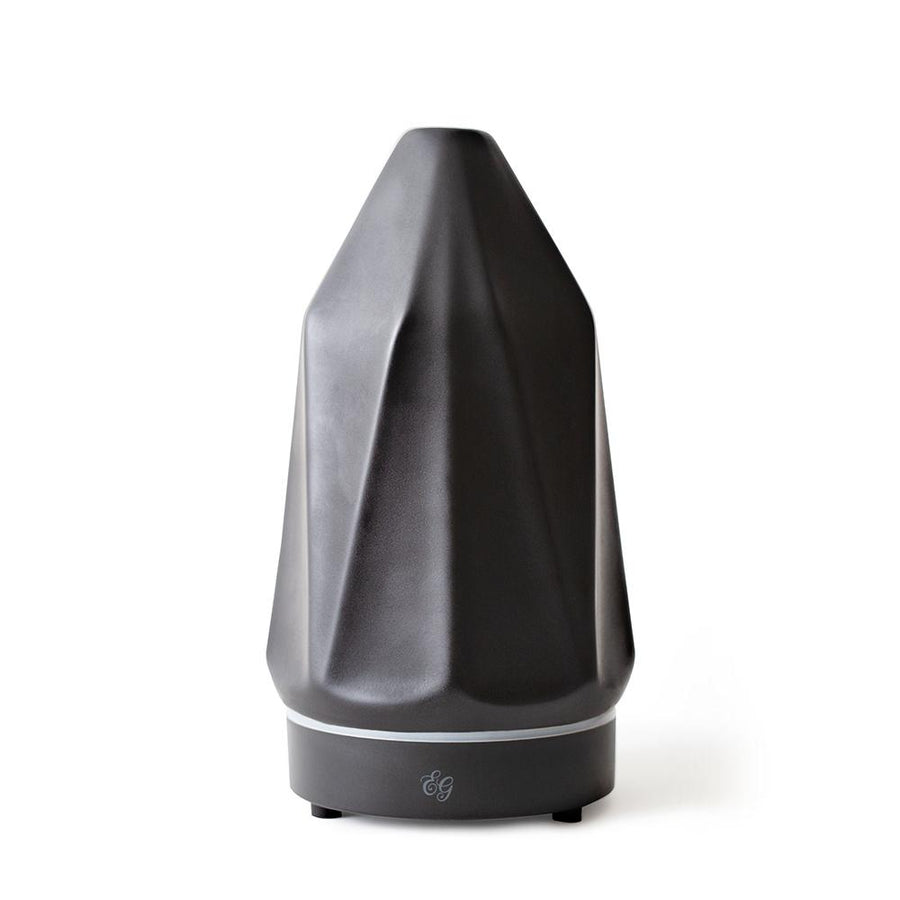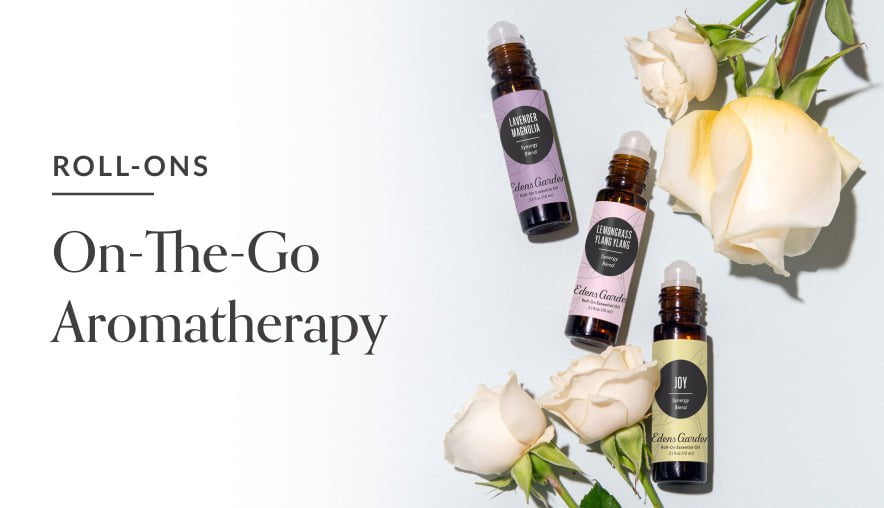The Best Benefits Of Using Common Cold Aid Essential Oil Blend During Sick Season

If you watch Saturday Night Live, you may have seen a skit they aired where the actor who played the mother in a family contracted COVID-19. Warn down and exhausted, she was happy about it - an excuse to have a “vacation” and run away from the duties of motherhood by quarantining for 10-14 days. Hilarity aside, many of us cannot afford to lose work time and family time due to being sick.
But, we can do our best to keep ourselves healthy and keep our immune systems strong by eating nourishing meals, washing our hands often and masking when needed. But once you start feeling sick, the possibility of spreading a cold or flu to others including coworkers, children and even elderly family members, may be inevitable. During the realistic throes of illness, our psyche, energy, mood and ability to breathe well may all be zapped. And if your job is to take care of others, who is there to take care of you?
Thankfully, we have for you an incredible way to cope with Common Cold Aid essential oil blend (previously known as Exhale).
Essential oils for Coughs & Colds
There are numerous essential oils studies that “have shown that essential oils can alleviate symptoms [of colds and flu], fight viruses and make you feel better when you’re sick.” If you catch cold symptoms just as they are coming on, you may potentially halt a sore throat or a cold in its tracks. If a cold or the flu gets past your defenses, we have just the right combination of essential oils to reduce congestion that leads to stuffy heads, runny noses and phlegm build-up in the chest as well as mollify a spastic cough and open up the respiratory pathways to ameliorate breathing issues.
Common Cold Aid essential oil blend contains a short but notably effective list of essential oils for colds and flu. Here is a breakdown of the best essential oils for their fighting power.
Eucalyptus (Eucalyptus globulus)
The microbe fighting strength of Eucalyptus essential oil lies in the component 1,8 cineole aka eucalyptol which is tenacious against viruses, inflammation and bacteria. With colds and flu, it has a direct alleviating “activity on the respiratory tract, the coughing reflex and the airflow in the nasal tract.” It also has antiallergenic abilities during the pollen season. However, there are some safety recommendations with this oil as well as any others which contain 1,8 cineole. We highly recommend avoiding the use of Eucalyptus with children under the age of 10 as well as anyone suffering from asthma. Test their reaction to oils with 1,8 cineole by having them take a whiff of this single oil before using it as it can potentially restrict breathing.
Lemon (Citrus limon)
The clean, zesty and crisp aroma of Lemon essential oil can inspire and bring a smile even to the most stoic of people. Its main component, Limonene, is well researched and documented not only for its talent at uplifting mood but because it is an effective antimicrobial essential oil. Lemon oil is often added to many commercial and homemade cleaning products as a disinfectant for its potency against viruses and bacteria. In blends for colds and flu, it encourages drainage from a runny nose and sinus congestion and enables steady breathing.
Tea Tree (Melaleuca alternifolia)
The herbal and sharp aromatics of Tea Tree oil bring with it a medicinal quality that has the capacity to fight viruses and inhibit bacteria. This versatile oil gives a double whammy not only in helping to fight cold symptoms but also in reducing spastic cough in the event that a chest infection takes hold. Tea Tree essential oil also has antihistaminic properties due to the component Terpenine-4-ol which reduces allergic reactions due to pollen and other irritants.
Peppermint (Mentha piperita)
The minty and fresh herbaceousness of Peppermint essential oil is unmistakable. Its main property, menthol, brings on mental alertness and vivacity making it a great oil to use when feeling foggy and sluggish due to a cold or flu. Peppermint oil is skillful when it comes to fighting microbes and viruses and handy when in need of opening the breath and relieving stuffy noses and congested lungs. As an analgesic, it reduces the sensations of a sore throat and has been known to ease sinusitis and curtail a cough. As a digestive aid, it is well known to calm queasiness or indigestion after a big meal.
Ravensara (Ravensara aromatica)
Not to be confused with Ravintsara which is higher in 1,8 cineole, Ravensara has a fresh, and camphorous aroma and contains a number of components that can battle allergies, bacteria and microbes and is a very strong antiviral. It has an affinity to support the body and is a comforting friend to have on hand when sick with a cold and flu by opening the breath, breaking up mucus and reducing cough. Its added properties of Linalool and Limonene can also enhance mood and calm an anxious mind.
Common Cold Aid Essential Oil Blend Benefits
Common Cold Aid Essential oil blend is a deeply restorative aromatherapy blend of robust essential oils with a minty, camphorous and somewhat citrusy cold and flu season blend made for adults and children over the age of 10. When down for the count with a cold or flu, the effectiveness of this blend can help to get us back on our feet faster. This blend helps to promote a stronger immune system with its immune-boosting oils. It even has the ability to suppress and prevent seasonal threats before they strike.
The oils in this blend work together to help you and your family in numerous ways. Here are some reasons to keep Common Cold Aid in your medicine cabinet:
- Reduce aches and pain associated with a sore throat
- Fight viruses and inhibit bacteria to help suppress infection and reduce its ability to make you sick
- Cool a fever
- Reduce spastic cough
- Break up chest congestion and nasal passage congestion
- Open up deeper breathing and clear airways from a stuffy nose and sinus infections
- Reduce symptoms of sinusitis
- Ease headaches and any other aches and pains associated with colds and flu
- When distilled it can disinfect surfaces and destroy airborne germs after a cold or flu takes hold
- Reduce allergic reactions
- Aid indigestion or an upset stomach
- Uplift mood and quell an anxious mind
We do offer a few words of caution with this blend, especially for children and during pregnancy. Because of the fact that there is not enough research about the safety of essential oils for very young children or pregnant women, we suggest you talk to your doctor if you have any concerns about essential oil use. The use of Peppermint and Eucalyptus is contraindicated if you’re pregnant and during the first trimester of pregnancy, it is wise to avoid essential oil use altogether. Also, while breastfeeding you may want to avoid using essential oils since Edens Garden does not advocate the use of essential oils around children under the age of 2.
How To Use Common Cold Aid Essential Oil Blend for Coughs, Congestion and Runny noses with DIY Projects
-
Chest & Back Rub (Massage Oil): Relieve congested lungs and stuffy, runny noses and even headaches by massaging this oil blend onto the chest, back and neck; If you like warmth when you are sick, try adding a hot compress to the mix for 10 minutes after applying chest rub which will further help to break up chest congestion.
DIY: Use a one-ounce glass pump bottle fill the bottle up to the neck with Fractionated Coconut oil or any other carrier oils of your choice with 10-15 drops of Common Cold Aid essential oil blend. Shake gently to incorporate and massage over the lungs onto the chest and back and if desired due to neck pain, massage the oil blend onto the neck.
- Steam Inhalation: Help relieve sinus congestion, headaches and other cold symptoms with steam inhalation. Boil water and place a large glass or ceramic in a safe spot where you can steam for a few minutes. Pour the steamy hot water into the bowl and add 1-2 drops of Common Cold Aid essential oil. Drape a towel over your head tenting the bowl, place your face over the bowl with your eyes closed inhale deeply for several minutes.
- Diffuse: Reduce stuffy and runny noses with Common Cold Aid blend with your home diffuser. Everyone breathes better with Common Cold Aid circulating in your home plus this essential oil blend also acts as an airborne disinfectant to stop microbes in their tracks. We recommend that you follow the manufacturer's suggested instructions that came with your device. However, a basic rule to follow is to simply add 6-10 drops of essential oil to 100 ml of water in the home diffuser.
-
Steamy Bath: Relieve sinus congestion, coughs and other cold symptoms with a hot steamy bath.
DIY: Using a bowl or glass container that will be designated for essential oils and bath salts, mix together 2 cups of Epsom salts, ½ cup of Castile soap and 6 drops of Common Cold Aid essential oil blend. Mix the blend together well and add to a warm bath. Soak your body for at least 15 minutes and breathe the steam and vapors deeply.
-
Cleaning: Along with Eucalyptus, Lemon and Peppermint, Common Cold Aid can be blended into DIY cleaning products to keep your home germ free and keep infections from spreading.
DIY: Make a bathroom scrub with 1 cup of baking soda, ½ teaspoon of corn starch, 3 tablespoons of unscented liquid Castile soap and 2 tablespoons or more as needed of white vinegar and 20 drops of Common Cold Aid essential oil blend. Blend the dry ingredients and then the wet ingredients into the dry to form a soft paste. Use as needed to clean bathrooms and more and add a shine to your day.
- Masks: When you wear a mask, we all know breathing through them can be difficult at times. Carry Common Cold Aid essential oil blend with you at all times. Place one drop on a mask to make breathing easier and effortless.
SOURCES:
- 16 Best Essential Oils for the Colds and Congestion https://www.womenshealthmag.com/health/g28761979/essential-oils-for-colds/
- The Treatment of Respiratory Ailments with Essential Oils https://pubmed.ncbi.nlm.nih.gov/19039907/
- Eucalyptus Oil Reduces Allergic Reactions and Suppresses Mast Cell Degranulation https://www.ncbi.nlm.nih.gov/pmc/articles/PMC7708995/
- Antimicrobial Activity of 6 Essential Oils Against a Group of Human Pathogens
- https://www.ncbi.nlm.nih.gov/pmc/articles/PMC6471180/
- Ravensara Essential Oil Benefits and Uses https://www.aromaweb.com/essential-oils/ravensara-oil.asp
- Chemical Composition of Ravensara aromatica Sonn. Leaf Essential Oils from Madagascar https://www.researchgate.net/publication/233428929_Chemical_Composition_of_Ravensara_aromatica_Sonn_Leaf_Essential_Oils_from_Madagascar
- The treatment of respiratory ailments with essential oils of some aromatic medicinal plants https://pubmed.ncbi.nlm.nih.gov/19039907/
- Treatment of upper respiratory tract infections in primary care: a randomized study using aromatic herbs https://pubmed.ncbi.nlm.nih.gov/21052500/
- Appropriate use of essential oils and their components in the management of upper respiratory tract symptoms in patients with COVID-19 https://www.ncbi.nlm.nih.gov/pmc/articles/PMC7997686/
- Essential oils used in aromatherapy: A systemic review https://www.sciencedirect.com/science/article/pii/S2221169115001033








Leave a comment (Comments will be approved before showing up)